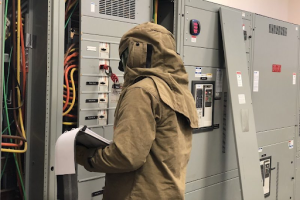Electrical hazards are one of the most serious risks in any workplace, especially in environments with high-voltage equipment or complex electrical systems. Arc flashes, which occur when electricity jumps through the air from one conductor to another, can cause severe injuries, burns, and even fatalities. Understanding and mitigating these risks is crucial for maintaining a safe working environment. One effective way to achieve this is through an arc flash study, a detailed analysis of your electrical systems to identify potential dangers and recommend safety measures.
Understanding Arc Flashes
An arc flash is a sudden release of electrical energy through the air that can generate extreme heat, intense light, and powerful pressure waves. These events can damage equipment, cause fires, and seriously injure workers. The severity of an arc flash depends on several factors, including the voltage, the type of equipment, and the distance from the source. Without proper precautions, arc flashes can lead to catastrophic consequences for both employees and businesses.
What is an Arc Flash Study?
An arc flash study is a comprehensive evaluation of your electrical system designed to assess potential hazards and improve workplace safety. This study involves examining electrical panels, switchgear, transformers, and other equipment to determine the level of risk for each component. It calculates the potential energy released during an arc flash and identifies areas where protective measures are needed. The study also considers factors like system configuration, fault currents, and protective device settings.
How an Arc Flash Study Improves Safety
By conducting an arc flash study, you gain a clear understanding of the hazards present in your workplace. The study provides vital information, such as the required personal protective equipment (PPE) for workers, safe working distances, and proper labeling of electrical panels. With this data, employees can take informed precautions, reducing the likelihood of accidents. The study also helps in implementing engineering controls, such as installing arc-resistant equipment or improving grounding systems, further minimizing the risk of electrical injuries.
Compliance with Safety Standards
Many countries have strict regulations regarding electrical safety in the workplace. Standards like the NFPA 70E in the United States set guidelines for preventing arc flash incidents. Conducting an arc flash study ensures that your business complies with these standards, reducing legal liabilities and demonstrating a commitment to worker safety. Proper documentation from the study can be used during safety audits and inspections, showing regulators that your workplace prioritizes electrical hazard management.
Training and Awareness
An important benefit of an arc flash study is its role in employee training. The study identifies specific risks associated with different equipment and tasks, allowing management to develop targeted safety training programs. Workers become more aware of potential hazards, understand the importance of PPE, and learn safe procedures for working on or near electrical equipment. This knowledge not only protects employees but also promotes a culture of safety throughout the organization.
Reducing Costs and Downtime
Electrical accidents can lead to costly repairs, medical expenses, and extended downtime. By identifying and mitigating risks through an arc flash study, businesses can prevent incidents before they occur. This proactive approach helps protect expensive equipment, maintain productivity, and avoid the financial impact of workplace injuries. In the long term, investing in an arc flash study is a cost-effective strategy that safeguards both people and property.
Conclusion
Workplace electrical hazards, particularly arc flashes, are serious threats that require careful attention. An arc flash study is a vital tool for identifying these risks and implementing effective safety measures. By providing detailed information on potential hazards, recommending protective equipment, ensuring regulatory compliance, and supporting employee training, an arc flash study significantly reduces the likelihood of electrical accidents. Businesses that invest in this process not only protect their workforce but also enhance operational efficiency and demonstrate a strong commitment to safety.







